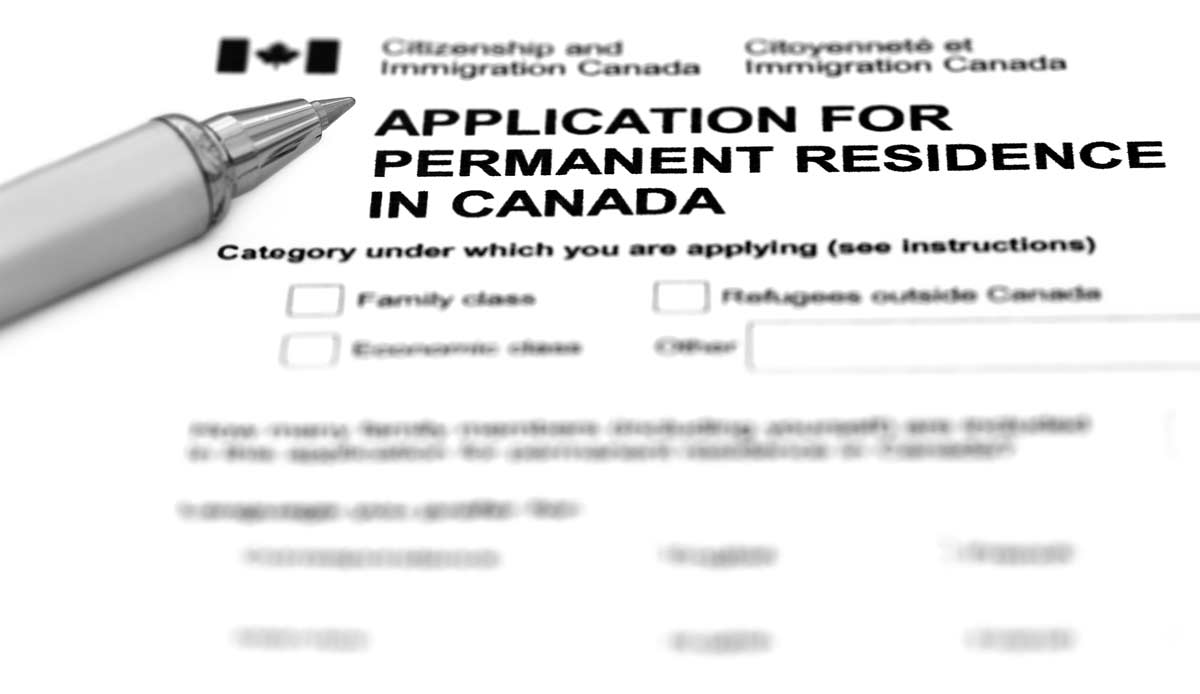In today’s globalized world, many individuals aspire to live and work in countries with promising opportunities and high living standards. Canada, with its multicultural society, strong economy, and diverse job market, is a popular choice for individuals seeking to settle in a foreign land. However, to legally reside in Canada for an extended period, one must go through the Canadian residence permit application process.
In this comprehensive guide, we will walk you through the step-by-step process of obtaining a Canadian residence permit. From understanding the different types of permits available to gathering the necessary documents and submitting your application, we will cover everything you need to know to increase your chances of success.
Table of Contents
- Introduction
- Types of Canadian Residence Permits
- Temporary Residence Permits
- Permanent Residence Permits
- Temporary Residence Permit Application Process
- Determine Your Eligibility
- Choose the Right Permit
- Gather the Required Documents
- Complete the Application Form
- Pay the Application Fees
- Submitting Your Application
- Permanent Residence Permit Application Process
- Express Entry Program
- Provincial Nominee Programs
- Family-Sponsored Programs
- Quebec-Selected Skilled Workers Program
- Start-up Visa Program
- Document Checklist for Permanent Residence Application
- Identity and Civil Status Documents
- Educational and Professional Qualifications
- Language Proficiency Tests
- Work Experience Documentation
- Proof of Financial Resources
- Medical Examination
- Biometrics and Security Checks
- Processing Times and Updates
- Interview and Additional Requirements
- Application Decision and Next Steps
- Conclusion
Introduction
Moving to a new country is an exciting yet challenging endeavour, and understanding the immigration process is crucial to ensure a smooth transition. Canada offers various residence permits depending on your intentions and qualifications, allowing you to reside in the country temporarily or permanently.
In the following sections, we will explore the different types of Canadian residence permits and guide you through the application process, highlighting the key steps and requirements at each stage. Whether you are interested in a temporary work permit, study permit, or permanent residency, this article will provide you with the essential information to navigate the Canadian immigration system successfully.
Types of Canadian Residence Permits
Before diving into the application process, it’s essential to understand the different types of Canadian residence permits available. The permits can be broadly categorized into temporary residence permits and permanent residence permits.
Temporary Residence Permits
Temporary residence permits allow individuals to stay in Canada for a limited period. The most common types of temporary residence permits include work permits, study permits, and visitor visas.
Work Permits
A work permit allows foreign nationals to work legally in Canada for a specific job, employer, and duration. There are several work permit categories, such as employer-specific work permits, open work permits, and permits under international agreements.
Study Permits
Study permits are necessary for individuals planning to pursue educational programs in Canada. To obtain a study permit, you must first secure admission to a designated learning institution in Canada and prove that you have sufficient funds to cover your tuition fees and living expenses.
Visitor Visas
Visitor visas, also known as temporary resident visas, are required for individuals who wish to visit Canada for tourism, family visits, or business purposes. These permits allow visitors to stay in Canada for a limited duration, typically up to six months.
Permanent Residence Permits
Permanent residence permits, as the name suggests, grant individuals the right to live and work in Canada indefinitely. Obtaining permanent residency can lead to Canadian citizenship in the long run. There are various programs through which individuals can apply for permanent residence
permits.
Express Entry Program
The Express Entry Program is a popular route for skilled workers who wish to become permanent residents of Canada. It includes the Federal Skilled Worker Program, the Federal Skilled Trades Program, and the Canadian Experience Class. Candidates are assessed based on factors such as age, education, work experience, language proficiency, and adaptability.
Provincial Nominee Programs
Provincial Nominee Programs (PNPs) allow Canadian provinces and territories to nominate individuals with specific skills and experience to settle in their region. Each province has its own criteria and selection process for the PNP, making it an attractive option for individuals with a particular connection to a specific province.
Family-Sponsored Programs
Canadian citizens and permanent residents can sponsor their close family members to become permanent residents of Canada. Spouses, common-law partners, dependent children, parents, and grandparents are eligible for sponsorship. The sponsor must meet certain requirements to be eligible.
Quebec-Selected Skilled Workers Program
Quebec, as the only province with its own immigration system, offers the Quebec-Selected Skilled Workers Program. This program assesses applicants based on factors such as education, work experience, language skills, age, and adaptability. If selected, applicants receive a Quebec Selection Certificate and can then apply for permanent residence with the Canadian federal government.
Start-up Visa Program
The Start-up Visa Program is designed for entrepreneurs with innovative business ideas that can contribute to the Canadian economy. To be eligible, applicants must have the support of a designated organization, meet language proficiency requirements, and have sufficient settlement funds.
Temporary Residence Permit Application Process
If you plan to visit Canada for a temporary stay, such as for work or study purposes, you will need to go through the temporary residence permit application process. Let’s walk through the key steps involved in applying for a temporary residence permit.
Determine Your Eligibility
Before starting the application process, it’s crucial to determine your eligibility for the specific permit you wish to apply for. Each permit has its own set of requirements and eligibility criteria. For example, work permits may require a job offer from a Canadian employer, while study permits may require a letter of acceptance from a Canadian educational institution.
Choose the Right Permit
Once you are familiar with the different types of temporary residence permits and their requirements, you can select the permit that aligns with your intentions. Consider factors such as the duration of your stay, the purpose of your visit, and your qualifications.
Gather the Required Documents
After choosing the appropriate permit, you will need to gather the necessary documents to support your application. These may include:
- Valid passport
- Letter of acceptance from a Canadian educational institution (for study permits)
- Job offer letter from a Canadian employer (for work permits)
- Proof of financial resources
- Language proficiency test results (e.g., IELTS)
- Medical examination certificate
Ensure that you have all the required documents ready before proceeding to the next step.
Complete the Application Form
To apply for a temporary residence permit, you will need to complete the application form. The form will require you to provide personal information, details about your intended stay in Canada, and other relevant information. Make sure to fill out the form accurately and double-check for any errors or omissions.
Pay the Application Fees
Along with your application, you will be required to pay the application fees. The fees vary depending on the type of permit you are applying for. Ensure that you have the necessary funds to cover the fees, and make the payment as instructed by the immigration authorities.
Submitting Your Application
Once you have completed the application form and paid the fees, it’s time to submit your application. You can either submit it online through
the Canadian government’s official immigration website or through a paper application at the designated visa application centre.
Carefully follow the instructions for submission and make sure to include all the required documents. Keep copies of your application and supporting documents for your records.
Permanent Residence Permit Application Process
If your intention is to settle in Canada permanently, you will need to go through the permanent residence permit application process. The application process for permanent residence can be complex and varies depending on the program you are applying through. Let’s explore the key programs and steps involved.
Express Entry Program
The Express Entry Program is a point-based system that assesses candidates based on various factors, such as age, education, work experience, language proficiency, and adaptability. The steps involved in applying through Express Entry are as follows:
- Create an Express Entry profile: Provide information about your qualifications, skills, work experience, and language proficiency.
- Receive an Invitation to Apply (ITA): If you meet the minimum eligibility requirements and have a competitive Comprehensive Ranking System (CRS) score, you may receive an ITA to apply for permanent residence.
- Complete the permanent residence application: Once you receive an ITA, you will have a limited time to submit a complete application for permanent residence, including supporting documents.
- Medical examination and police clearance: You will be required to undergo a medical examination to ensure that you meet the health requirements. You will also need to provide police clearance certificates from countries where you have lived for a certain period.
- Pay the permanent residence fees: The permanent residence application includes various fees, such as the processing fee and the right of permanent residence fee. Ensure that you have the necessary funds to cover these fees.
- Application review and decision: Once you have submitted your application, it will be reviewed by immigration officers. They may request additional documents or information during the process. If your application is approved, you will receive a Confirmation of Permanent Residence (COPR).
Provincial Nominee Programs (PNPs)
Provincial Nominee Programs allow provinces and territories in Canada to select candidates who meet their specific labour market needs. The application process for PNPs generally involves the following steps:
- Choose a province: Research the different PNPs and their eligibility criteria. Select the province that aligns with your qualifications and aspirations.
- Apply to the province: Submit an application to the province or territory you have chosen. The application may require you to demonstrate your skills, work experience, language proficiency, and intent to settle in the province.
- Receive a provincial nomination: If your application is successful, you will receive a provincial nomination certificate. This nomination adds points to your Express Entry profile, increasing your chances of receiving an ITA.
- Complete the permanent residence application: Once you have received a provincial nomination, you will need to complete the permanent residence application, including supporting documents and fees.
- Application review and decision: Your application will be reviewed by immigration officers, and they may request additional documents or information. If approved, you will receive a COPR.
Family-Sponsored Programs
Canadian citizens and permanent residents can sponsor their close family members to become permanent residents of Canada. The family-sponsored application process involves the following steps:
- Check your eligibility: Ensure that you meet the requirements to sponsor a family member. You must be a Canadian citizen or permanent resident and meet certain financial and other criteria.
- Submit the sponsorship application: Complete the sponsorship application forms and gather the necessary supporting documents. This includes providing proof of your relationship with the sponsored person.
- Complete the permanent residence application: Once the sponsorship application is approved, the sponsored person will need to complete the permanent residence application, including supporting documents and fees.
- Application review and decision: The applications will be reviewed by immigration officers, and they may request additional documents or information. If approved, the sponsored person will receive a COPR.
Quebec-Selected Skilled Workers Program
The application process for the Quebec-Selected Skilled Workers Program involves the following steps:
- Submit an expression of interest: Express your interest in immigrating to Quebec by submitting an expression of interest through the Arrima portal. Provide information about your education, work experience, language proficiency, and other factors.
- Receive an Invitation to Apply (ITA): If you meet the eligibility requirements and have a competitive score, you may receive an ITA to apply for permanent residence in Quebec.
- Complete the permanent residence application: Once you receive an ITA, you will need to complete the permanent residence application, including supporting documents and fees.
- Application review and decision: Your application will be reviewed by immigration authorities, and they may request additional documents or information. If approved, you will receive a Quebec Selection Certificate (CSQ) and can then apply for permanent residence with the Canadian federal government.
Start-up Visa Program
The application process for the Start-up Visa Program involves the following steps:
- Get a letter of support: Secure a letter of support from a designated organization in Canada. The organization must be willing to invest in and support your business idea.
- Prove your language proficiency: Take a language proficiency test to demonstrate your language skills in English or French.
- Provide proof of funds: Show that you have sufficient funds to support yourself and your dependents during your initial stay in Canada.
- Submit the application: Complete the application forms and provide all the required documents, including the letter of support, language test results, and proof of funds.
- Application review and decision: Your application will be reviewed by immigration officers, and they may request additional documents or information. If approved, you will receive a letter of introduction and can then travel to Canada to activate your visa.
Document Checklist for Permanent Residence Application
When applying for permanent residence, you will need to gather various documents to support your application. The specific documents required may vary depending on the program you are applying through. Here is a general checklist of documents you may need:
Identity and Civil Status Documents
- Valid passport
- Birth certificate
- Marriage certificate (if applicable)
- Divorce or separation documents (if applicable)
- Police clearance certificates
Educational and Professional Qualifications
- Educational certificates and transcripts
- Professional certifications and licenses
- Letters of reference from employers or educational institutions
Language Proficiency Tests
- Language test results, such as IELTS or CELPIP, to demonstrate your proficiency in English or French
Work Experience Documentation
- Letters of reference from past employers
- Employment contracts or pay stubs
- Proof of self-employment or business ownership (if applicable)
Proof of Financial Resources
- Bank statements
- Proof of investments
- Employment offer letter or contract (if applicable)
Medical Examination
- Medical examination certificate from an approved panel physician
It’s important to carefully review the specific document requirements for your chosen program and ensure that you have all the necessary documents ready before submitting your application.
Biometrics and Security Checks
As part of the application process, you may be required to provide biometric information, such as fingerprints and a photograph. Biometrics help Canadian immigration authorities verify your identity and conduct security checks.
To provide your biometrics, you will need to visit a designated biometric collection centre. You will need to pay the biometrics fee and follow the instructions provided by the immigration authorities. Ensure that
you schedule an appointment and complete the biometric enrollment within the specified timeframe.
Conclusion
Applying for a Canadian residence permit can be a complex process, but with the right information and guidance, it is achievable. Whether you are applying for a temporary or permanent residence permit, understanding the different programs and their requirements is essential.
Remember to determine your eligibility, choose the right permit, gather the required documents, and complete the application accurately. Be prepared to pay the necessary fees and undergo biometric enrollment if required.
Consulting with an immigration lawyer or a regulated immigration consultant can provide valuable guidance and support throughout the application process. They can help you navigate the intricacies of the immigration system, ensure that your application is complete and accurate, and increase your chances of a successful outcome.
If you follow the application process diligently and provide all the necessary documents, you can increase your chances of obtaining a Canadian residence permit and embarking on a new chapter of your life in the beautiful and diverse country of Canada.
FAQs (Frequently Asked Questions)
1. How long does it take to process a Canadian residence permit application?
The processing time for Canadian residence permit applications can vary depending on the type of permit and the program you are applying through. Generally, the processing times can range from a few months to over a year. It’s important to check the current processing times on the official website of Immigration, Refugees and Citizenship Canada (IRCC) for the most accurate information.
2. Can I work in Canada while my permanent residence application is being processed?
In some cases, you may be eligible to work in Canada while your permanent residence application is being processed. This is possible if you have applied for a work permit along with your permanent residence application and meet the eligibility criteria for a work permit. It’s advisable to consult the specific guidelines and regulations outlined by IRCC to determine your eligibility.
3. Can I apply for Canadian citizenship after obtaining a Canadian permanent residence permit?
Yes, once you have been a permanent resident of Canada for a certain period and meet the eligibility criteria, you can apply for Canadian citizenship. The requirements for Canadian citizenship include residency requirements, language proficiency, and knowledge of Canada. It’s important to note that the application process for Canadian citizenship is separate from the permanent residence application process.
4. Can I include my family members in my permanent residence application?
Yes, you can include eligible family members in your permanent residence application. Spouses, common-law partners, dependent children, and in some cases, parents and grandparents can be included as accompanying family members. Each family member included in the application must meet the eligibility criteria and provide the required documents.
5. What happens if my application for a Canadian residence permit is refused?
If your application for a Canadian residence permit is refused, you may have the option to appeal the decision or reapply. The specific options available to you will depend on the reasons for the refusal and the program you applied through. It’s crucial to carefully review the refusal letter and seek professional advice to determine the best course of action in such situations.






